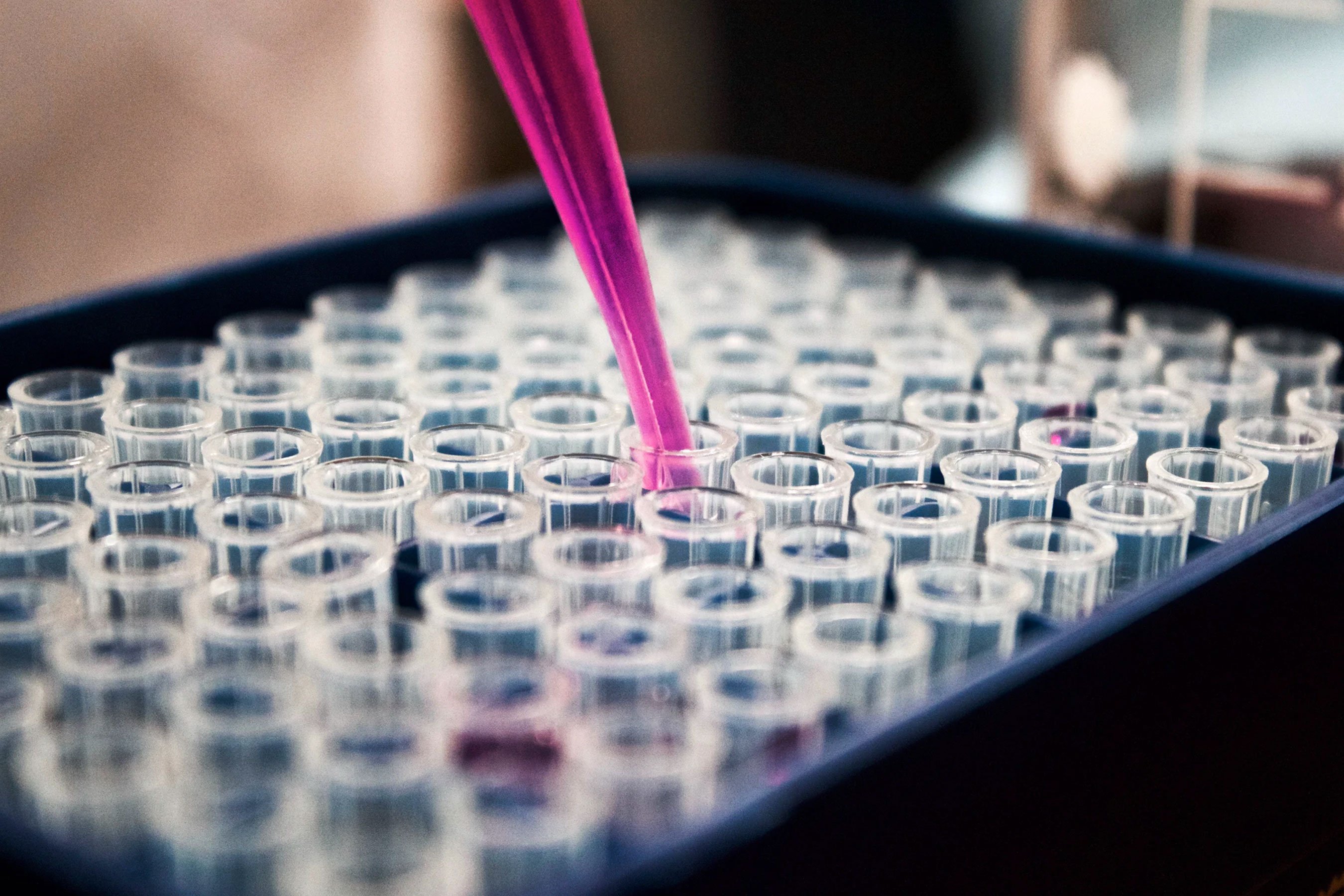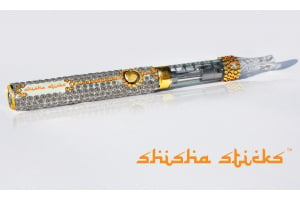The Ultimate Guide to PG VG Ratios

Vaping is a newer, less harmful form of smoking. Vapers heat an e-liquid to produce inhalable vapour that feels like smoke but doesn't have any of the carcinogens associated with cigarettes. Switching from combustible cigs to vaping can be tricky, though; make sure you know what device works best for your needs. Vaping also requires getting used to certain terms such as PG & VG content (propylene glycol and vegetable glycerin levels), voltage settings etc., which can vary by device type, and manufacturer but are always clearly indicated on product packaging.
Vaping has been around since the early 2000s, yet many people are only now catching onto its existence as it becomes more mainstream. There might still be some confusion about how this whole process actually works - but don't worry if you're just getting started. An excellent starting point would be to familiarise yourself with the different aspects of e-liquids such as flavour, nicotine strength, cloud production and propylene glycol and vegetable glycerine levels (PG/VG ratios)that help attain that orgasmic vaping experience.
Most important are the Propylene Glycol (PG) and Vegetable Glycerine (VG), which, together with nicotine, make up the holy trinity of e-liquid ingredients. PG/VG ratio of an e-liquid has a significant bearing on the vaping experience, influencing the flavour, cloud production, smoothness (or lack thereof), and throat hit. With this in mind, it's vital to choose the correct PG/VG ratio for the best vaping experience based on your personal needs and preferences.
This is the ultimate guide to PG/VG ratios. You'll find everything you’d want to know about vaping and e-liquids in here, including what they are made of along with their best mixes for different experiences like a more intense flavour or an all-day vape. First things first, let's start by looking at some basics: ingredients!
E-Liquid Ingredients
E-liquid, alternatively referred to as vape juice, is made up of four key (base) ingredients:
Propylene glycol (PG): An almost odourless, clear liquid with a slightly sweet taste made from organic compounds. Also found in other items such as processed foods and medicines.
Vegetable glycerine (VG): A thick, clear, odourless and sticky liquid made from vegetable fat. VG has widespread applications, including sweetening foods, manufacturing toothpaste and medicines, among others.
Artificial flavourings: Imitations of natural flavours processed in the laboratory using synthetic chemicals referred to as esters.
Nicotine- A tobacco extract also found in cigarettes that acts as a stimulant substance and is considered addictive. Nicotine is distilled into a clear, liquid solution before it's added to the vape juice. The level of nicotine varies in e-liquids, with some completely free of nicotine. The highest legally allowed nicotine content in an e-liquid set by the EU TPD E-Cigarette Regulations is 20mg per ml.
Understanding VG and PG
E-liquids are a mix of two base diluents, VG and PG, that produce vape clouds that imitate smoking. The two base components act as carriers, carrying nicotine and flavourings heated by coils in e-cigarettes, producing an aerosol with predominantly these ingredients. When heated, PG produces throat hits that provide a similar smoking experience to actual tobacco products, while VG produces "clouds" for those who enjoy it.
A vaper inhales the aerosol by drawing in the vape through the mouth and holding in the puff as they pull away from the mouthpiece. This will create an inhalation that can be felt throughout the body as the vaper gets high off of nicotine which has been flavoured to taste like anything from bubblegum or strawberry milk to cigars and coffee beans.
Propylene Glycol (PG)
PG stands for Propylene Glycol. It is fit for use as a food additive and as a pharmaceutical ingredient; therefore, it suffices to say that Propylene Glycol is safe for human consumption. It is formally recognised on the UK’s Food Standards Agency's Approved Additives List (E1520). PG belongs to the diols chemical structure and has a similar chemical structure to alcohol, i.e. ethanol. As such, it's clear, odourless, a slightly sweet liquid and less viscous than VG. It's manufactured on an industrial scale by reacting propylene oxide with water.
PG in Vaping
In vaping, PG is responsible for carrying most of the flavour and provides a throat hit- a similar sensation to what is experienced when smoking tobacco. Considering that it carries flavour more effectively than VG, PG is commonly used as a suspension fluid to deliver nicotine and flavour concentrates. If you've just made the transition from smoking to vaping, an e-liquid with a high amount of PG is suitable as it offers a much more pronounced throat hit when vaping.
In addition, its chemical properties are ideal for stimulating the smoking experience. It produces a light vapour density, more like the cigarette smoke density. What's more, since PG doesn't really have any odour or taste, it doesn't mask the nicotine and the flavourings which really come to life, producing a more intense throat hit.
Other Uses of PG
Apart from its use in vaping, Propylene Glycol has a myriad of uses across different industries, with close to £3 billion global value in 2019. Some of its uses include:
- Used as a preservative and humectant in the food and pharmaceutical industries.
- Solvent for medical products, including topical and oral formulations, asthma inhalers ,as well as injectables.
- Used to create fog or artificial smoke in theatrical productions and fire-fighting training
- Used as a solvent, a humectant in beauty products.
- Oral hygiene products
- Pet food (apart from cat food)
Is Propylene Glycol (PG) Safe for Human Consumption
PG is entirely safe for human consumption. Several standardisation bodies across the globe have termed PG as generally safe for human consumption. These bodies include the US Food and Drug Administration (FDA) and World Health Organization (WHO). The UK's Food Standards Agency (FSA) has approved PG to be used as a food additive. The European CLP has classified propylene glycol as safe for oral, dermal and inhalation routes of administration.
While PG hasn't been established safe for use by vapers, there hasn't been any reported problem associated with inhaling PG vapour. However, new users may experience dryness of the throat and mouth due to its hygroscopic (moisture absorption) property. Also, note that some people are highly sensitive to propylene glycol, with studies showing that heavy exposure causes respiratory and ocular irritations. If you have PG sensitivity, use 100% VG as an alternative. All in all, PG is generally safe for human consumption unless you are allergic to it.
Benefits of PG in Vaping
PG is the go-to for most vapers, especially new ones who have just transitioned from smoking to vaping. As mentioned earlier, PG can carry nicotine efficiently and simulate that "throat hit" you get when smoking tobacco cigarettes.
Some pros of PG in vaping includes:
- Since it's much thinner than VG, it produces minimal vapour making it suitable for stealth vaping.
- PG achieves a better throat hit.
- It carries flavour and Nicotine much better than VG
- The level of heat required to get a vape from PG is much lower than the one required for VG. This means that you are less susceptible to getting burn injuries or melting plastic components during the vaping session.
Cons of PG in Vaping
Despite providing several benefits, having more PG in vape juice is not suitable for everyone. Why?
- Some vapers find the throat hit supplied by PG to be way too strong or harsh for their liking. Some vapers sustain a sore or burning throat after vaping e-liquids with a high PG ratio.
- Additionally, due to its hygroscopic (moisture absorption) chemical property, you're likely to experience a bit of mouth/throat dryness and, at times, a tickly cough due to dehydration. To avoid this issue, you'll want to drink plenty of water before vaping your favourite flavours.
- Another downside of high PG is that it produces less dense vapour compared to VG. Remember, the bigger and thicker the smoke clouds, the more thrilling the vaping experience.
Vegetable Glycerin (VG)
VG stands for Vegetable Glycerine, also referred to as glycerine or glycerol, is a colourless liquid that occurs as a byproduct of the processing of vegetable fats (e.g. soybean and coconut oil) and is generally considered non-toxic. VG falls under the sugar alcohol chemical group with an almost similar chemical structure to PG, only that there's one more OH group added to its molecule. VG is a triol meaning that it has three alcohol (OH) groups, while PG is a diol, meaning it has only two (OH) groups.
The addition of a single OH group makes the chemical forces hold the VG together firmly. As such, VG has a pretty high boiling point. It's also colourless, odourless, thick (syrup-like consistency) and with subtle sugar-like sweetness.
Vegetable glycerin levels occur as a by-product of various industrial processes involving natural oils from coconut, rapeseed, soybean and more. Once crude oil is isolated, it's refined via a distillation process that results in high-quality VG with many applications, e.g., in vape juice, pharmaceuticals, etc.
VG in Vaping
VG is responsible for two primary functions in vaping: adding a slight sweetness to the e-liquid to achieve a "smooth hit" and facilitating the majority of vapour production. An e-liquid with a high concentration of VG has a smoother throat hit and gives off thick vapours. High VG e liquids are usually thick making it suitable for sub-ohm vaping. Unlike PG, VG doesn't usually carry flavours very well and can potentially even out subtler flavours in the vape juice. While you can vape an e-juice consisting of 100% VG, a VG/PG blend is often recommended. Maximum VG in vape juice is suitable for dripping, sub-ohm vaping and temperature control vaping.
Other Uses of VG
Apart from its use as a component of e-liquids, VG has widespread applications across different industries. Some common applications of VG include:
- Used as a sweetener in the food industry
- Solvent for food colourings and flavourings
- Used in the pharmaceuticals in coughs, syrups, medical creams, jellies, capsule pills and ointments to provide thickening.
- Used a moisture retainer in beauty products and medicine (e.g. cough syrups)
- Used in beauty products such as deodorant, bubble bath, aftershave, mousse and make-up products
- Used in the baking industry to increase moisture
- Used in soap and hand cream
- Used in pet food
- Used in dental care products
Is it Safe to Consume Vegetable Glycerol?
VG is 100% natural and also totally safe for human consumption as classified by WHO and FDA. Even in high concentration levels, VG remains a safe compound. The UK's FSA approved VG as a food additive, while the European CLP regulation classified VG as ‘not harmful or toxic for dermal, oral or inhalation routes of administration’.
In 2008, a study on the toxicity of inhaling aerosolised glycerol determined that VG has no serious health impact. Persons with allergies to plant oils should, however, avoid vaping e-juice. Its toxicity levels are also low compared to PG (propylene glycol), which carries artificial flavours and is synthetically manufactured.
Benefits of VG in Vaping
VG offers several benefits in vaping.
- High VG e-liquids create big, thick clouds making the vaping experience exciting and thrilling. As such, it's ideal for cloud chasers who try to produce the biggest smoke clouds in vaping competition.
- Another benefit of VG in vaping is that it facilitates smooth throat hit as it is responsible for the smoothness quality of an e-liquid.
- VG is 100% natural, making it suitable for health-conscious vapers who may have issues with synthetic ingredients in vaping.
- While both PG and VG are dehydrating, VG is less dehydrating than PG.
Cons of VG in Vaping
VG has some downsides when used in high concentrations in vape juice. Some downsides of VG include:
- Unlike PG, VG is less effective in carrying flavour, meaning that you won't feel the flavour as much as you would have with an e-liquid consisting of a higher PG concentration.
- Vaping high VG e-liquid can be problematic because it is thick and viscous, which tends to clog up your vape coils faster than high PG e-liquid. It also takes longer for the liquid to soak into the coil, causing blockages that shorten the lifespan. Older vape devices, particularly those with smaller coils such as eGo and Nautilus, have difficulties dealing with high VG vape juices.
- VG doesn't offer as much throat hit as PG. Therefore, it isn't well suited for people looking to quit smoking but still looking to get high on vaping.
- Also, like PG, VG can be dehydrating leading to sore throat, dry mouth and increased thirst. To be on the safe side, make sure you're drinking plenty of water.
- Some people are allergic to plant oils, which means they may develop reactions to the VG in vape juice.
Factors to Guide You in Choosing the Best PG/VG Ratio
The best VG/PG ratio depends on the kind of vaping experience you’re looking for. Below are a few factors to consider.
- Flavour and Throat Hit- For optimum e-liquid flavour while vaping, it is better to go with an even PG: VG e-liquid ratio, i.e. 50:50. You can also go for an e-liquid with a higher concentration of PG to increase the throat hit: a PG: VG ratio of about 60:40.
- Smoothness- The throat will have a smoother feeling when vaping if you choose a vape juice with a higher VG concentration. The viscous and oily nature of VG offers the smoothness that many people enjoy while vaping. However, the vape juice flavour in high VG liquids tends to be crowded since VG itself is sweet. In other cases, the flavour is altogether muted since VG is not the best carrier. To remedy the flavour issue, one can increase the power to produce more vapour, intensifying the taste of the flavour. However, it's important to keep in mind what power level (wattage or voltage) your coils are designed for so as not to ruin them by operating too high on either one!
- Discreteness- If you're out and about in public, the best way to keep your vaping discreet is by using high PG e-liquids. Higher PG: VG ratio vapes are perfect for low-key cloud chasers who love staying under the radar, even when they light up at their favourite spot! However, no matter how much of an attention seeker you might be, make sure not to forget that it's illegal to use vaporisers in some public areas or indoors without permission from whoever owns that property first.
- Cloud production- For cloud chasers who exhale big and thick clouds of vapour, a high VG juice is the way to go. A VG: PG ratio of about 80:20 or 70:30 will get you humongous amounts of dense clouds. However, note that a high concentration of VG is not suitable for all types of e-cigarettes as it can easily clog the wick or coil, damaging the device. A sub-ohm vaping setup is ideal for high concentrations of VG. If you notice the vape juice is too viscous, add some deionised water to reduce the viscosity of the e-liquid.
- The type of device- The type of vaping device you own will largely affect your ideal PG: VG ratio. PG vaporises at low temperatures; thus, high PG concentration e-liquids work best with low wattage devices. On the other hand, VG is a viscous liquid that takes time to soak up the wick. It is also highly susceptible to causing blockage or clogs in the coil. As such, high VG concentrations work best with high wattage vape devices or sub-ohm vapes.
As a side note, if you're unable to find a pre-mixed e-liquid that matches your preferred ratio, you purchase the VG and PG separately and mix your own e-liquid to achieve your ideal balance. With this in mind, you have the full freedom and capacity to personalise your e-liquid based on your vaping styles.
A Comparison of PG and VG in Vaping
While PG and VG have apparent differences in regards to vaping, there are significant differences between the two primary ingredients of e-liquids, as outlined below.
PG Has a More Intense Throat Hit
PG offers a more robust and cigarette-like throat hit when compared to VG. Former smokers that are just switching over to vaping will find PG ideal, as it eases the transition since PG offers a “smoking-like effect”. However, some people may not enjoy the strong feeling in their throats after inhaling too much vapour from e-liquids with high PG content; for them, sticking solely with those made using higher VG is recommended instead. It's also worth noting that if you don't care about the "smoking" effect of vaping or have grown tired of it by now, then there are other options available, including ones rich in VG, which offers smoothness on your throat.
The Wick Soaks up PG More Efficiently Than VG
PG vaporises faster than VG and also soaks into the wick more quickly. This is why you're less likely to experience a nasty-tasting "dry puff" when using PG e-liquid- but it can still happen if your vape coil isn't adequately doused in liquid before vaping or for any other reason. If you can't wait an extra second for the next puff, then high VG is not a good choice. The thicker viscosity means it takes longer to reach and soak up into the wick than PG does. To overcome the issue of VG not soaking into a wick as quickly, modern atomisers and sub-ohm tanks feature larger portholes to allow for easier absorption. This provides an enjoyable vaping experience without any dry hits that may be noticeable with VG fluids.
VG Has Denser Cloud Formation than PG
One of the considerations when choosing vape juice is which base to go with, VG or PG. High VG concentration can produce denser and thicker vapour that facilitates a thrill of excitement for many vapers. However, it won't replicate all sensory experiences like throat hits from smoking, so it's important to find a balance between them in order to achieve both.
PG Interferes With the Flavours Less than VG
PG is a better choice of e-liquid for vaping due to its ability to carry flavour without interfering with the integrity and taste. PG also has no smell or flavour, which means it won't cloud up your experience as you vape either! However, some flavours are made specifically for different types of liquids so that they will have their greatest effect when vaped in those specific mediums.
VG/PG Ratio
When it comes to e-liquids, the ratio of PG and VG can make all the difference. E-liquid comprises different ingredients such as flavourings, nicotine, and PG & VG with varying concentrations. Nicotine usually mixes best when dissolved into a mix of either one or both fluids. Flavours also play a major role here, considering how important they are in making your vape experience enjoyable; flavours get carried better through PG fluid over VG. What’s important is the percentage of propylene glycol (PG) and vegetable glycerine (VG) contained in an e-liquid, i.e. PG/VG ratio. This ratio, abbreviated as PG/VG, VG/PG, PG: VG and so on, has a major bearing on the different aspects of vaping, including throat hit, the strength of the flavour and the amount of cloud production. Below are some standard PG/VG ratios.
Common VG/PG Ratio
50VG/50PG
The 50/50 PG and VG ratio is one of the most common ratios available, alluding to a good balance between flavour, throat hits, and cloud production. It is best used in low-voltage devices below 80 watts for producing bigger clouds but without overpowering flavours. The use of this ratio on high voltage systems (above 80 watts) can be trickier because it might burn the taste as PG (that carries the flavour) generally vapes at a lower temperature. However, this ratio is compatible with most standard vape devices in the market. This ratio is also a good starting point for vapers who are just getting into DIY juice mixing!
70VG/30PG
The 70VG/30PG ratio is ideal for vapers who are more interested in the vapour production quality but still wish to feel a hint of flavour and nicotine rush from the e-liquid. It is ideal for sub-ohm vapers or high wattage systems. You won't have to lower your power levels if you're using this blend
75VG/25PG
This ratio combination is not very popular among vapers.75 VG/ 25 PG is the perfect mix for those who want a little more out of their vape. You'll be able to produce bold and thick clouds with a fuller flavour taste, all without sacrificing on throat hit. Dense clouds of vapour on the exhale are great for cloud chasers.
80VG/20PG
Cloud chasers crave thick and bold clouds, which is why 80VG/20PG blends are so popular with this crowd. The ratio provides a subtle throat hit, but users will notice a decline in flavour. This combination creates a thicker liquid due to the high VG concentration, making it ideal for sub-ohm vapes.
90VG/10PG
For those who are less concerned with the flavour of their e-liquid and enjoy producing massive clouds when vaping, 90% VG/ 10% PG is the perfect ratio. This mixture is ideal for use on high wattage vape devices. While the 10% PG concentration highly reduces the throat hit and flavour impact, the high wattage system counterbalances the loss of flavour to some degree.
Max PG
Max PG e-juice is the best for people looking to quit tobacco smoking. It provides the strongest throat hit and more flavour, but at the compromise of cloud intensity. Max PG means that this e-liquid contains the highest possible amounts of Propylene Glycol, giving your vape some serious kick while also preserving an intense amount of flavorful vapour; it's perfect if you're ready to finally give up cigarettes in favour of something less harsh on your lungs.
Max VG
Cloud chasing at its best! Max VG e-liquids are a hot trend in the vaping world and with good reason. They produce more vapour for vapers who enjoy exhaling large plumes of thick clouds that linger longer than traditional vape juices. However, this concentration means that vapers will experience negligible throat hit and flavour from their vapes. A Max VG liquid should be enjoyed through either sub-ohm devices or RDAs to get the full effect out of your device.
It is important to note that most manufacturers use this ambiguous term to mask the actual ratio composition of the vape juice. Max VG could represent 100% VG concentration but is not a given and is usually viewed as more of a marketing gimmick. It simply represents the highest concentration of VG for a certain brand and could be as low as 80% or as high as 100%.
What is the Ideal VG/PG Ratio
Vapers have long debated about the best PG: VG ratio, but there isn't one that is perfect for everyone. What you're looking to get out of your vaping experience will determine what ratios work best depending on how much vapour and throat hit you want. For example, if big clouds are important or a vital part of the vape, then an 80%VG/20%PG may be right for you, while someone who wants more flavour with less visible cloud production might find solace in a 70% /PG-30% VG.
Suitable E-Cigs/ Vape Mods for Different E-Liquids
Ideally, all vape mods or e-cigs should accommodate all e-liquids. However, for the optimal vaping experience, it's crucial to tailor your e-liquid to your e-cig.
Best Devices for High PG E-liquids
With high PG e-liquids, it's recommended to use e-cigs or vape mods with a coil resistance of one ohm (Ω) and lower power. This recommendation is based on the principle that high resistance coils are best suited for higher-PG e-liquids and vice versa. Being a thinner liquid, PG works in most vape devices with quick-wicking and atomisation. Some recommended models in this category include several classic vape pens and starter kits, such as the award-winning SMOK RPM40, the Aspire PockeX, the Aspire Favostix and the Aspire Zelos 3.
Best Devices for High VG E-liquids
E-liquids with higher VG content are recommended for use with high wattage/power vape devices with sub-ohm coils. Sub-ohm coils feature larger e-liquid inlet holes; therefore, the viscous VG won't have a difficult time wicking, which means more efficient vaping.. Some recommended e-cigs in this category include the Horizon Falcon II, Innokin MVP 5 Mod and the Smok Morph 2.
Note that some vape devices are capable of handling different VP: PG ratios hence offer vaping versatility. All you need to do is switch between different coils based on the types of e-liquid you want to vape. Such devices include the Aspire Nautilus Prime X., Kroma Z and Vaporesso Luxe PM40. If you're a person who constantly changes VG: PG ratios for different vaping experiences, these models are ideal for you.
It Takes Time to Know Your Ideal VG: PG Ratio
Fiddling with the VG: PG ratio may be tedious, but it can pay off handsomely. From the different ratios, the one you choose as your ideal will ultimately determine your vaping experience and make all of that trial-and-error worthwhile.
When choosing the ingredient composition for your e juice, there are some key things to keep in mind, such as personal preference (maybe thicker clouds over stronger throat hits), device compatibility (high VG requires higher wattage devices), smoothness, discreteness, and most importantly health considerations- people allergic to plant oils should stick to low VG concentrations. All in all, if you're looking for the perfect vaping experience, it's time to get experimenting.
















